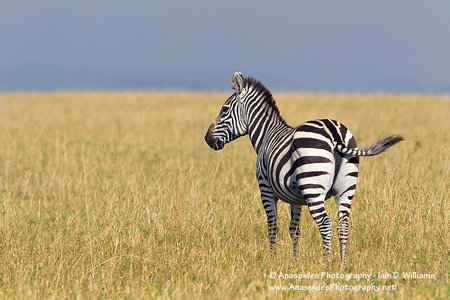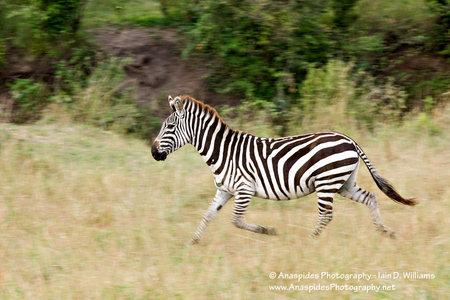Why Do Zebras Have Stripes
 Friday, November 21, 2014 at 12:57PM
Friday, November 21, 2014 at 12:57PM  Africa is the repository for a number of remarkable animals; however, the black and white striped Plains Zebra (Equus quagga), known locally as the tiger horse is often overlooked. The reason why this particular animal is decorated with such a striking pattern of stripes, not observed in other hoofed animals, has often been discussed in scientific circles.
Africa is the repository for a number of remarkable animals; however, the black and white striped Plains Zebra (Equus quagga), known locally as the tiger horse is often overlooked. The reason why this particular animal is decorated with such a striking pattern of stripes, not observed in other hoofed animals, has often been discussed in scientific circles.
LEFT: Plains Zebra (Equus quagga), known locally as the tiger horse (click to enlarge).
Wallace and Darwin
In the late 1800’s, Alfred Russel Wallace and Charles Darwin debated the striped pattern and proposed several ideas. The main argument being that the alternating black and white stripes had evolved to act as a form of camouflage, by disrupting predatory attack by visually confusing carnivores. A similar disruptive camouflage pattern is often used to paint naval ships and can be seen on military uniforms; the stripes tend to break up the outline of a solid object. Another suggestion was that the stripes could act as a social mechanism; zebras live in herds of several or more individuals, while a third hypothesis was the possibility that striping was used as a mechanism for heat management - white reflects heat whilst black absorbs heat.
Flies and Body Hair
Recently, the conundrum was solved when a group of scientists discovered that stripes act as a deterrent to attack from horseflies and tsetse flies. Although the exact reason to why flies find striped surfaces unattractive is not yet known, the reason to why zebras have stripes, in contrast to other hoofed animals was revealed.
For the most part African hoofed mammals have longish body hair that protects them from hungry-biting insects; the mouth parts of the flies are not long enough to penetrate the length of hair. Zebras on the other hand have very short body hair and the skin is easily reached bythe hungry blood-sapping flies.
 To provide evidence to support the scientist’s hypothesis, biologists mapped the worldwide geographic distribution of zebra species, noting the thickness, location and intensity of striping, within a range of variables such as: temperature, predators and habitat. They then mapped the distribution of horseflies and tsetse flies and examined the areas where variables overlapped. The results indicated that zebra striping was more pronounced, thicker and darker in areas of overlap. Furthermore, it was observed that striping was more pronounced during periods of high fly reproduction.
To provide evidence to support the scientist’s hypothesis, biologists mapped the worldwide geographic distribution of zebra species, noting the thickness, location and intensity of striping, within a range of variables such as: temperature, predators and habitat. They then mapped the distribution of horseflies and tsetse flies and examined the areas where variables overlapped. The results indicated that zebra striping was more pronounced, thicker and darker in areas of overlap. Furthermore, it was observed that striping was more pronounced during periods of high fly reproduction.
LEFT: The pattern of stripes can be confusing to predators when the zebra is at the trot (click to enlarge).
Although some of Wallace’s theories may hold water in that there is a possibility that striping has other advantages, such as camouflage; this is not the evolutionary driver for striping. It would appear that evolution, in zebra species, has selected black and white stripes as an effective means to combat insect attack.
References
Caro, T., et al,. 2014, Function of Zebra Stripes. Nature Communications 5, Article number: 3535
Video
The herd of zebra was captured in the Maasai Mara National Reserve, a large game reserve in Narok County, Republic of Kenya. The 'Mara' is contiguous with the Serengeti National Park in Mara Region, Tanzania. The video particularly shows the intensity of the striping.


